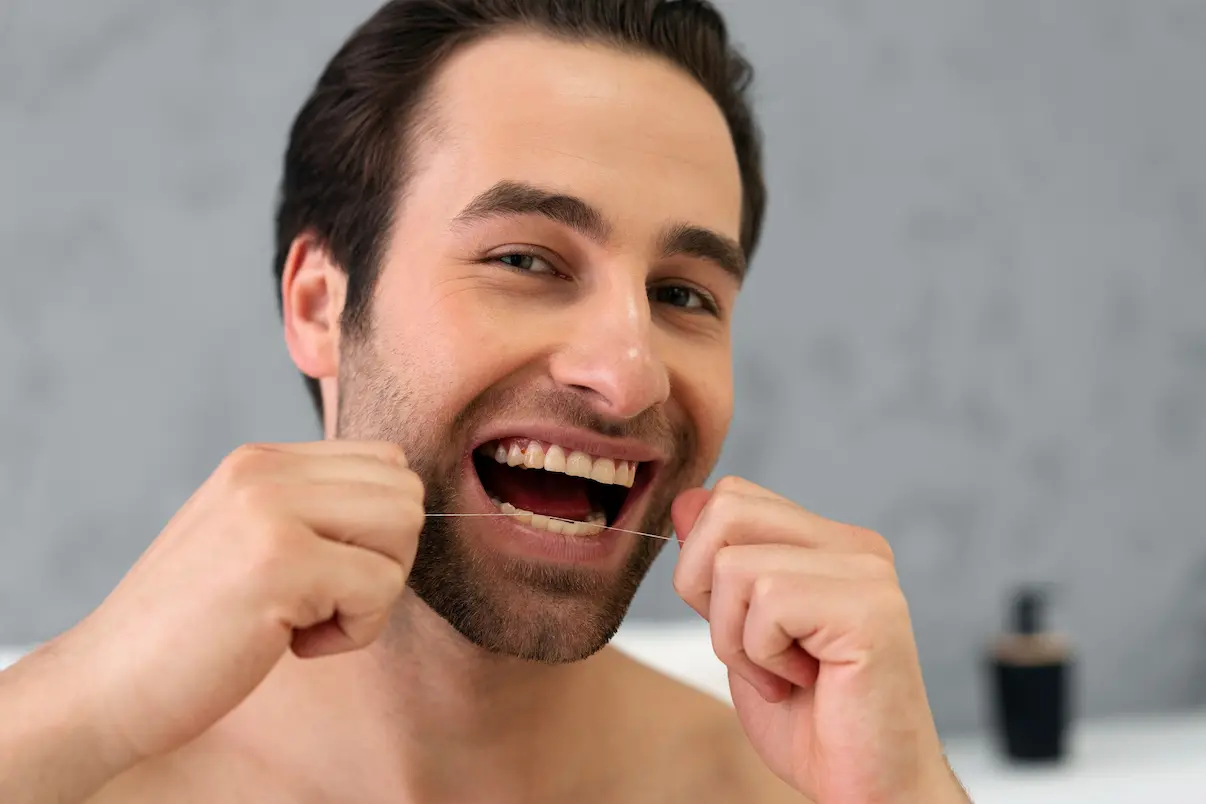Submit Request ...
-
Forums
Removing plaque and tartar from teeth at home

When people eat, bacteria in the mouth break down carbohydrates from food into acid. This mixes with leftover food particles and saliva to create plaque.
Brushing and flossing often prevent plaque and tartar from forming. However, tartar can be more difficult to remove and sometimes requires a visit to the dentist’s office for a professional cleaning.
Poor oral hygiene can also cause bad breath, tooth decay, and gum disease. Recent research has also uncovered potential associations between gum disease and other health conditions, including pneumonia, dementia, and heart diseaseTrusted Source.
This article explains simple ways to remove plaque and prevent tartar buildup at home.
What is plaque?

Plaque is a soft, sticky film that builds up on the outside of the teeth and along the gum line. A person can often prevent and treat plaque buildup at home. If a person does not practice good dental hygiene, plaque can turn into a hard yellow-brown substance called tartar.
Tartar is harder to remove. When it collects above the gum line, it can cause the gums to swell and bleed more easily. This is known as gingivitis, an early form of gum disease.
How to remove tartar and plaque at home
While practicing good oral hygiene can help keep plaque at bay, tartar may be more difficult to remove at home than plaque. This is because tartar is hardened plaque that a toothbrush cannot remove.
Dentists and dental hygienists typically use a variety of dental tools in the office to remove hard plaque from the teeth.
Brushing with baking soda
Brushing with baking soda can safely and effectively remove plaque. While still abrasive, baking soda toothpaste is not as hard as the enamel that makes up teeth and can remove plaque without damaging the enamel.
A 2017 review suggests that toothpaste that contains baking soda may be more effective at reducing the amount of plaque in the mouth than traditional toothpaste.
Another review from 2017 published in the same journal found that toothpaste containing baking soda falls within safe dental abrasivity levels, meaning that they are unlikely to harm tooth enamel.
Baking soda also protects against demineralization, which is a chemical process that removes calcium from tooth enamel.
Carbohydrates from food can drastically lower the pH level in the mouth, creating an acidic environment that causes demineralization. Scientists measure the acidity of a substance using the pH scale. The lower the pH, the more acidic the substance.
The lower limit for enamel pH ranges between 5.1–5.5. When the pH drops below this range, demineralization begins to occur.
Baking soda reduces demineralization because it has a high pH, which can help balance the pH level inside the mouth and prevent enamel loss.
The mouth is home to a diverse ecosystem of bacteria, some of which are beneficial while others can be harmful. Streptococcus mutans, for example, is a bacteria primarily responsible for tooth decay.
Baking soda also has antimicrobial properties that may prevent tooth decay. Research from 2017 suggests that baking soda can significantly reduce the amount of S. mutans.
Oil pulling with coconut oil
Oil pulling is a folk remedy said to remove bacteria from the mouth and improve oral health. It involves swishing, or pulling, an edible oil around in the mouth through the gaps between the teeth.
However, the ADA does not recommend this practice for removing plaque and tartar. So far, there have been no reliable studies to show its effectiveness. The ADA recommends brushing teeth twice daily with toothpaste containing fluoride and flossing once daily to support oral health.
However, oil pulling is unlikely to cause harm in addition to the ADA-recommended practices outlined above.
Coconut oil has anti-inflammatory and antioxidant properties. Coconut oil also contains lauric acid, a fatty acid with antimicrobial properties.
A 2015 studyTrusted Source involving 60 adolescents with gingivitis found that oil pulling with coconut oil resulted in a 50% decrease in dental plaque. The study participants also experienced a significant decrease in gingivitis symptoms. The researchers believe this was due to the reduction in dental plaque.
However, larger studies are needed to support oil pulling as an effective dental hygiene practice.
Instructions for oil pulling can include:
1. Place 1 tablespoon of warm coconut oil in the mouth.
2. Swish the coconut oil around the mouth for 5–10 minutes.
3. Spit out the coconut oil into a trash can or a paper towel.
4. A person should avoid spitting the oil into the sink, as it may clog the pipes.
Other edible oils for oil pulling can include:
✓ olive oil
✓ almond oil
✓ sesame oil
Practicing good oral hygiene
The best way to remove plaque and tartar is to practice good oral hygiene. The American Dental Association (ADA) recommends brushing twice a day with fluoride toothpaste. They also recommend flossing once a day.
Flossing first will remove pieces of food and plaque from between the teeth and hard-to-reach areas. After flossing, the toothbrush will remove plaque on the surface of the teeth.
To brush the teeth effectively, a person can:
1. Start in the back of the mouth with the top molars.
2. Use short, circular brush strokes.
3. Brush the front and back surfaces of all the upper teeth.
4. Repeat these stepson the bottom teeth.
People can achieve good results using manual toothbrushes. However, a 2017 systematic review found that electric toothbrushes, especially those with oscillating heads, are more effective at removing plaque and reducing gingivitis.
After flossing and brushing the teeth, rinse out the mouth with mouthwash. Many over-the-counter (OTC) mouthwash bottles contain fluoride for extra protection against plaque.
People who have gingivitis may require a stronger type of mouthwash. A dentist or another healthcare professional can prescribe antiseptic mouthwashes that are more potent than those available OTC.
Dentists can also apply sealants to the chewing areas of the teeth to help prevent plaque buildup in between professional dental cleanings.
Using a water flosser
A water flosser may help reach plaque from in between the teeth. This tool uses water pressure to dislodge food and plaque where string floss may not reach. It also massages the gums.
According to a 2016 review, using a water flosser along with a manual toothbrush was 29% more effective in removing plaque than using string floss and a manual toothbrush.
However, it does not replace traditional flossing — a person should use it in addition.
Using a water flosser
A water flosser may help reach plaque from in between the teeth. This tool uses water pressure to dislodge food and plaque where string floss may not reach. It also massages the gums.
According to a 2016 review, using a water flosser along with a manual toothbrush was 29% more effective in removing plaque than using string floss and a manual toothbrush.
However, it does not replace traditional flossing — a person should use it in addition.
Prevention
The best way to prevent the buildup of plaque and tartar on the teeth is by flossing once a day and brushing twice a day with fluoride toothpaste. Be sure to change toothbrushes regularly as they lose their effectiveness with use.
Regular dental checkups and professional cleanings can also help prevent and treat oral health problems.
Dentists examine the whole mouth, checking for signs of tooth decay, gum disease, and oral cancer. They will also remove any plaque or tartar on the surface of the teeth and in difficult-to-reach places. Dentists can also treat the teeth with fluoride to help prevent tooth decay.
If a dentist notices any cavities or signs of gum inflammation, they will recommend ways to reduce symptoms and prevent further damage. They may prescribe medical mouthwash or suggest adjusting a person’s oral hygiene routine.
Dietary changes can also help prevent plaque and tartar buildup. Cutting back on sugar, starch, and acidic foods can reduce the risk of tooth decay.
To reduce the risk of plaque and tartar, a person should avoid:
1. sweets and candy
2. starchy or sugary foods that can stick to the teeth, such as bread, potato chips, and some dried fruits
3. soda and sports drinks
4. citrus juices
Please let us know what you think!